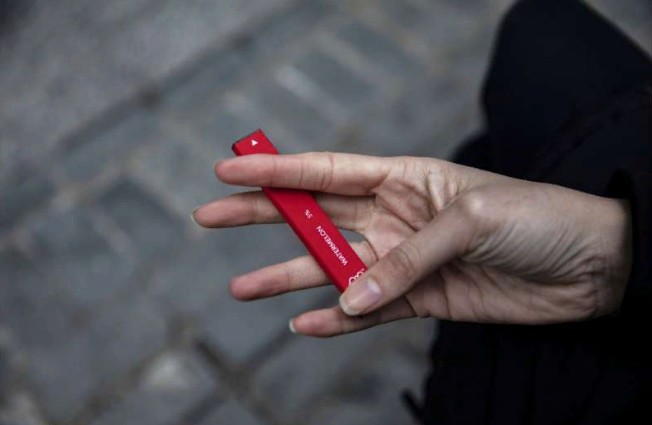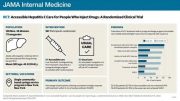Regulators in the United States will soon begin cracking down on vaping companies that are taking advantage of a now-closed loophole, including a line of fruit-flavored e-cigarettes that have become a popular choice among teenagers.
Under a new law that goes into effect on Thursday, the Food and Drug Administration will be able to regulate e-cigarettes and similar products that use synthetic nicotine.
Among the companies named in the lawsuit are Puff Bar and a number of other vaping companies that recently changed their formulas so that they wouldn’t have to deal with the FDA.
The change will allow the FDA to “hold e-cigarette companies that use synthetic nicotine to the same public health standards we’ve implemented for other tobacco products,” FDA Commissioner Robert Califf said in a tweet on Wednesday.
People who work for companies now have to register with the FDA and send their products for review within 30 days.
Puff Bar did not respond to a request for comment on Thursday.
The FDA’s action does not automatically result in the prohibition of Puff Bar and similar products. Instead, it subjects them to the same regulatory framework as older e-cigarettes that get their nicotine from tobacco.
“The synthetic nicotine products do not necessarily disappear on their own,” says Robin Koval, CEO of the Truth Initiative, an anti-tobacco advocacy group. “The FDA will have to decide how they want to enforce the law, which they should do.”
The FDA has been reviewing applications for a wide range of vaping devices, formulas, and flavors, rejecting over 1 million, mostly due to their potential appeal to children. It is hoped that the FDA will act quickly on any applications from Puff Bar and other companies.
Nicotine, the addictive chemical in smoking and vaping, is found naturally in tobacco plants.
The 2009 law that established the FDA’s oversight of cigarettes and related products only applied to nicotine derived from tobacco. This created a market for synthetic nicotine, which is now used in e-cigarette liquids, nicotine pouches, and other products.
Congress passed a law last month that said the FDA can regulate any form of nicotine, no matter where it comes from.
Puff Bar, which debuted in 2019, has grown to become the most popular e-cigarette among teenagers by far, with flavors such as blueberry, strawberry, banana, and mango. Company: The company announced that it would stop selling its disposable vaping devices in 2020 because of the FDA’s pressure. The company would no longer sell them at convenience stores, gas stations, and vape shops.
In February of this year, the company announced a “new launch” of its colorful devices that use synthetic nicotine. According to the company’s marketing materials, its products “do not contain tobacco or anything derived from tobacco.” Puff Bar was thus placed in a legal limbo because federal, state, and local restrictions almost always apply to tobacco-based products rather than nicotine itself.
Last year, Stanford researchers discovered synthetic nicotine products for sale on online platforms that prohibit the sale of tobacco, such as Amazon, eBay, and Target. This means that under the new law, synthetic nicotine will be subject to the same federal age limit and sales restrictions as other types of tobacco.
The use of synthetic nicotine is not a novel concept. Tobacco companies tested chemically derived nicotine as early as the 1960s, but it was too expensive for mass production. In the last few years, manufacturing progress has made it a viable alternative to nicotine that comes from tobacco.
According to a large government survey conducted last year, Puff Bar has surpassed more well-known brands to become the top choice among high schoolers who vape. A lot of people think Juul started the teen vaping trend. It was the fourth most popular brand.
In 2020, the FDA limited the flavors in cartridge-based e-cigarettes like Juul to menthol and tobacco, which are generally preferred by adults. Disposable electronic cigarettes, like the Puff Bar, did not fall under this rule. Other vaping devices did not fall under this rule either.
Anti-tobacco groups are concerned that the FDA appears to be one or two steps behind whatever products are making inroads among children.
The lesson we can all take away from this is that when the FDA’s actions are incomplete and happen after the fact, as has frequently been the case with e-cigarettes, you’re always playing whack-a-mole and catching up,” Koval said.





